europa
Latest
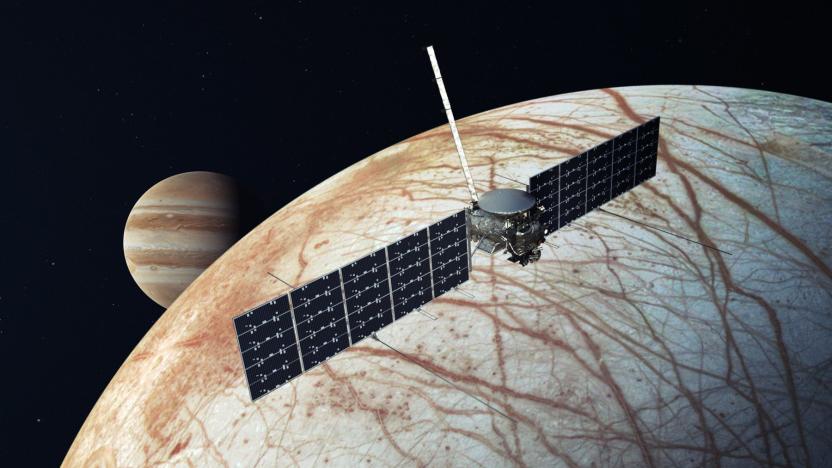
Now’s the last chance to send your name to one of Jupiter’s moons on NASA’s Europa Clipper
NASA's Europa Clipper mission is set to launch in October 2024 to study whether the icy Jupiter moon could support life. In a campaign called Message in a Bottle, NASA has invited the public to have their names added to the spacecraft alongside a poem by US Poet Laureate Ada Limón.
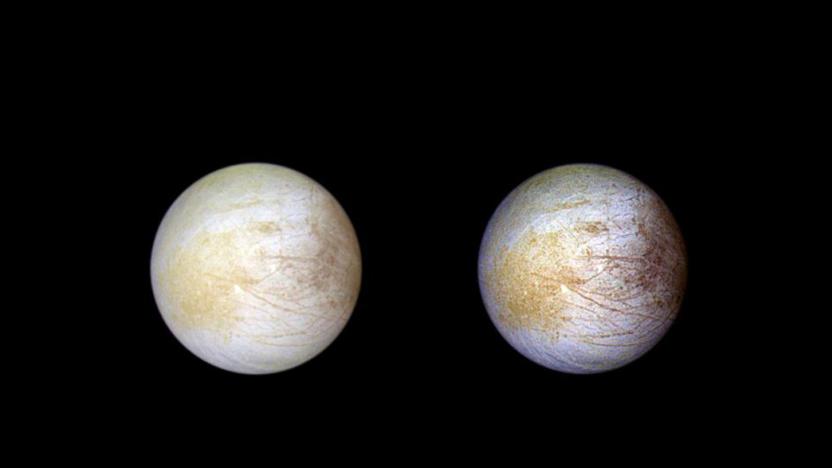
NASA's James Webb Telescope may have found the source of Europa's carbon
Europa is one of the objects in our solar system that's under observation for potentially having the conditions to support life.

Europa's resemblance to Greenland bodes well for possible life on Jupiter's moon
Europa has features similar to Greenland, and they add to evidence that Jupiter's moon could support life.

NASA confirms mission to Jupiter's moon Europa
NASA has been talking for years about sending a probe to Europa, and now it's locking down those plans. The agency has confirmed the next phase of its Europa Clipper mission, which will send a spacecraft to the Jovian moon to determine if it could support life. The move allows progress toward finishing and testing a final design for the spacecraft. The administration is developing for a 2023 launch target to ensure a "cost-effective" process, but it's prepared to launch as late as 2025.
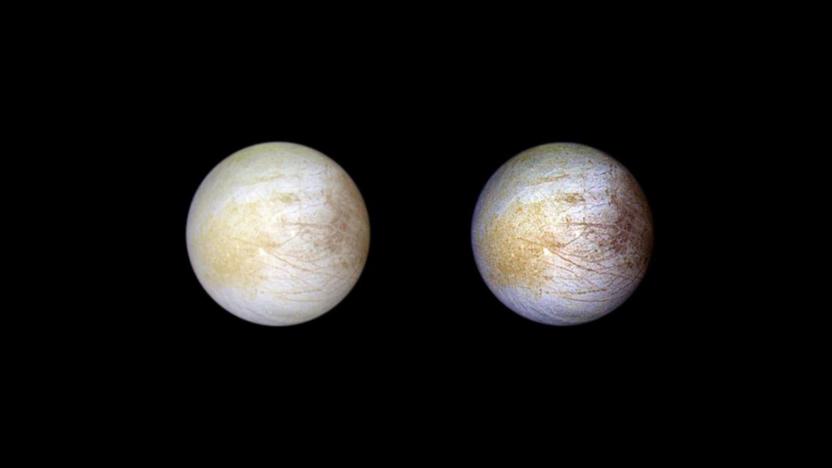
There's table salt on one of Jupiter's moons
The ocean that scientists believe exists underneath Europa's thick icy crust might be more like our own than previously thought. According to a new study published in Science Advances, a team of researchers used the Hubble Space Telescope Imaging Spectrograph (STIS) instrument to scan Jupiter's moon in infrared light. The team found what's called the "spectral signature" of irradiated sodium chloride, also known as table salt.

NASA is testing Jupiter moon probe's data-beaming antenna
What the Europa Clipper finds when it starts orbiting Jupiter's icy moon won't be of any use to us if it can't send data back to Earth. In order to beam back information from that far into the solar system, the Clipper will be equipped with a high-gain antenna (HGA) that the space agency is currently testing. NASA is evaluating a full-scale 10-foot-tall prototype of the HGA -- a directional antenna that allows precise targeting of radio signals -- at the Experimental Test Range (ETR) at NASA's Langley Research Center.
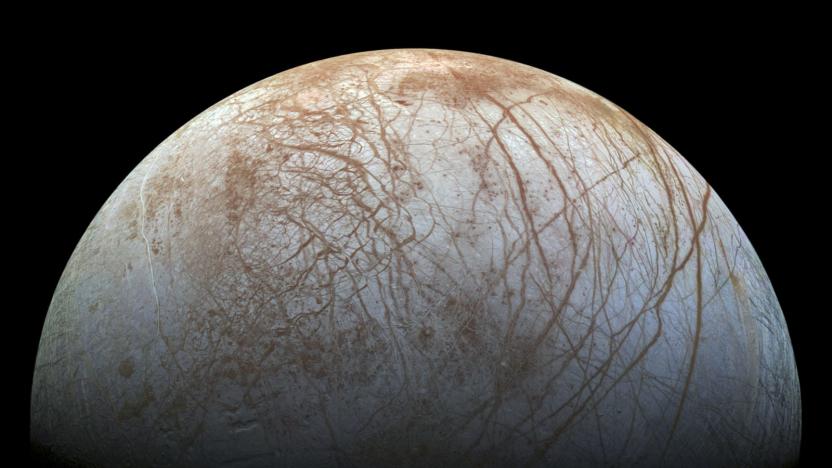
Decades-old data helps confirm Europa is geysering water into space
Over the past few years, the Hubble Space Telescope has observed what looked to be plumes of water vapor shooting from the surface of one of Jupiter's moons, Europa. Now, scientists have looked over decades-old data from Galileo and discovered that the spacecraft actually got close to one of these plumes during a flyby. This is the first up-close measurement we have of these eruptions, and the best evidence yet that Jupiter's fourth-largest moon is indeed shooting water into space. The findings are detailed in an article in Nature Astronomy, which was released today.

How NASA will defend the Earth against plagues from outer space
In the summer of 1957, the Earth stood witness as a meteorite cratered in rural Pennsylvania, bringing with it a people-eating plague never seen: an alien amoeba with the taste for human flesh. While we had Steve McQueen around for the first invasion, humanity is now defended against microbial marauders from outer space by NASA and its international counterparts.
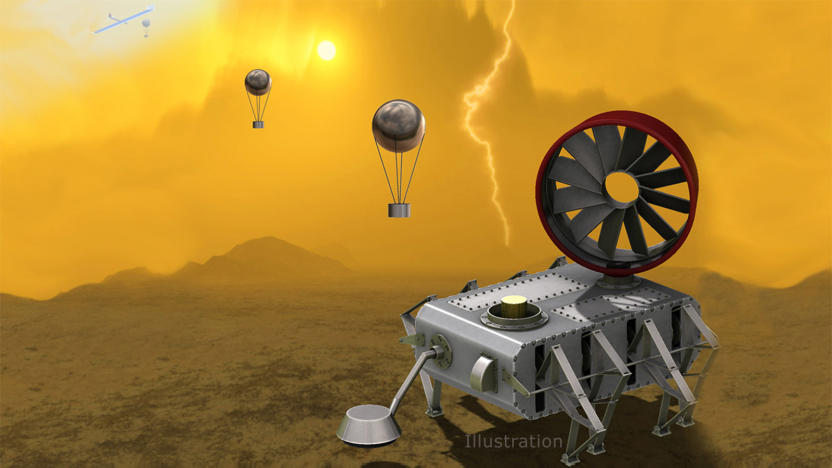
NASA goes Steampunk for its future Venus probes
NASA knows better than any of us that what seems normal today was once science fiction. So, it isn't afraid to bet some cash on some fanciful space projects via the NASA Innovative Advanced Concepts (NIAC) symposium. This year, the agency looked at projects it calls "little more than ideas," including a Venus probe inspired by famed Dutch artist Theo Jansen, the creator of wind-powered "Strandbeests."

Saturn and Jupiter's moon burps bode well for distant life
Scientists recently took a closer look at data over a decade old and concluded that two moons orbiting Saturn and Jupiter might have environments that foster life. During an October 2015 flyby of the ringed planet's moon Enceladus, the probe Cassini was hit by gaseous plume, which was likely a hydrothermal vent breaking through the iced surface. Scientists theorize that the spray is evidence of chemical energy for life to feed on. Thanks to sporadic evidence of plumes on Jupiter's moon Europa, NASA has announced that two locations in the solar system might support living organisms.

ICYMI: DIY Iron Man
Today on In Case You Missed it: British inventor Richard Browning show us his (slow, careful) flights across a test area using his "Daedelus" jet pack prototype. Daedelus consists of six kerosene-powered microjets strapped to his limbs, which doesn't sound dangerous at all. While that might sound like a bad idea, the system "flies" at a walking pace, and the wearer only hovers about six to ten feet off the ground. For his part, Browning's convinced the jets are safe, stating that he uses small amounts of kerosene and has a dead-man's switch to kill the set-up when not pressed. For now, Browning is mostly shopping the device around at exhibitions, but he hopes it will one day be used by rescue or military personnel.
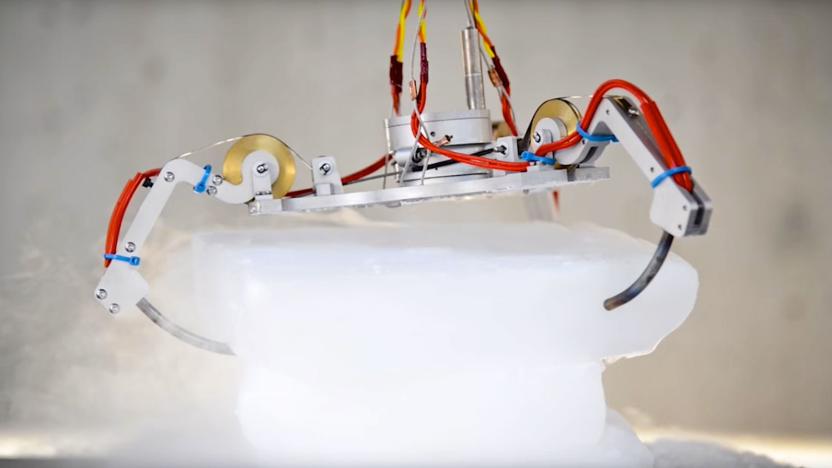
How NASA's future robots will explore frozen worlds
Delivering a rover to the surface of a distant icy world like Jupiter's moons Europa and Titan is only half the challenge. Once on the surface, the robotic explorers will have to contend with intense space radiation, plunging temperatures that drop to hundreds of degrees below zero and miles upon miles of ice before hitting the subsurface oceans that astronomers suggest may contain life. But NASA has a plan.
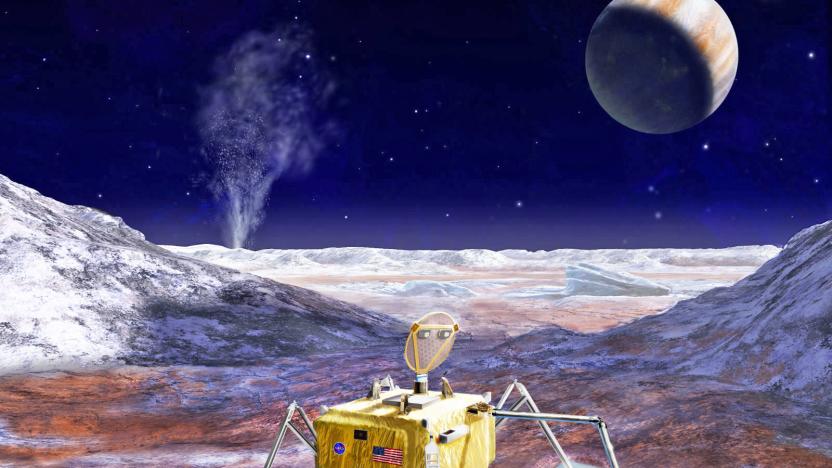
NASA wants to send a life-detecting lander to Europa
Back in June 2016, NASA commissioned 21 scientists to design a lander headed for Europa, conjure up science objectives for it and figure out if the mission is feasible. After around eight months of deliberation, the scientists have finally completed their assignment and presented their report (PDF) to the space agency. As you can see above, they went for a boxy spacecraft with spindly legs to accomplish the mission's goals, the biggest of which is to find signs of past and present life.

ICYMI: Roller coasters will be recommended by urologists
try{document.getElementById("aol-cms-player-1").style.display="none";}catch(e){}Today on In Case You Missed It: Researchers at Michigan State created a lifelike 3D model of a patient's kidney, with stones inside, and took it on a roller coaster after the man said the crystals cleared after riding Big Thunder Mountain. Turns out, the model backed it up and now, doctors will probably start recommending folks with smaller kidney stones ride roller coasters as treatment. The inner child of every adult just did a happy dance.

NASA observes possible water geysers on Europa
Hubble's extended mission continues to pay off: NASA announced today that a team of astronomers using the space telescope have spotted what appear to be plumes of high-altitude water vapor spewing from the icy surface of Jupiter's moon Europa. Researchers have long believed that Europa holds a global ocean beneath a thick, potentially miles-deep, layer of ice, but the new observation indicated it could be possible to sample the ocean without landing or drilling on the moon itself.

NASA's Europa mission takes another step toward reality
NASA's current plan for exploring Europa has just passed its first major review, proving that it's feasible, unlike any of the previous ideas the agency's scientists cooked up. America's space agency has been developing mission ideas for Jupiter's moon for years and even considered sending a lander to the satellite as recently as a year ago. Its scientists also once thought of sending a spacecraft to orbit Europa, but they ended up having to scrap that plan: the moon is bathed in Jupiter's radiation, which would quickly kill any vessel that's constantly exposed to it. So, instead of a lander or a Europa orbiter, NASA will send out a spacecraft in the 2020s designed to orbit Jupiter itself.

NASA picks the scientific tools it'll use to study Europa
NASA is convinced that Jupiter's moon Europa is worth visiting, and for good reason: its icy surface could be hiding a giant ocean friendly to life. The agency is going to need the right equipment if it's going to verify its theories, however, which is why it just chose nine instruments that will go aboard a Europa mission in 2020. The tools will use a mix of imaging, magnetometry, radar and spectrometry to study the frozen world's chemical composition and learn more about what's lurking out of view. While these gadgets won't completely eliminate the need for underwater probes and other landers, they could save scientists a lot of trouble (and expense) as they search for signs of organic material.

Jupiter's moon Europa might be coated in irradiated sea salt
Astronomers have spent more than a decade trying to identify the dark substance erupting from geological features on the surface of Europa. Now, a team of researchers at NASA's Jet Propulsion Lab believe they've identified the mystery material as sea salt. You know, from the ocean that NASA suspects is hiding under Europa's icy surface. The team, led by planetary scientist Kevin Hand, began its investigation by building a testing device that recreates the extreme conditions found on the gas giant's moon. "We call it our 'Europa in a can,'" Hand said in a statement. "The spectra of these materials can then be compared to those collected by spacecraft and telescopes."
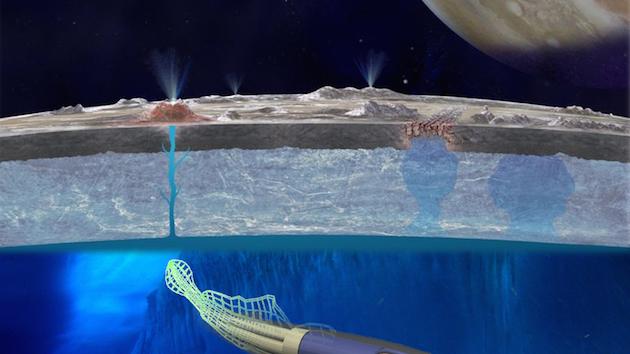
NASA thinks a robotic eel might be the key to exploring Europa
We've seen the submarine that NASA wants to explore Saturn's moon Titan with, but compared to what the aeronautics outfit's looking at for icy climes like Jupiter's Europa it's downright pedestrian. The wormy-looking contraption up above is actually considered a type of amphibious rover and it's pretty different from the Deep-SCINI we've seen previously. Because there aren't exactly electrical outlets anywhere aside from Earth and relying on solar power might not always be feasible, it has to use alternative means for energy. In this case, NASA says antenna on the soft robot's back would draw energy from "locally changing magnetic fields."
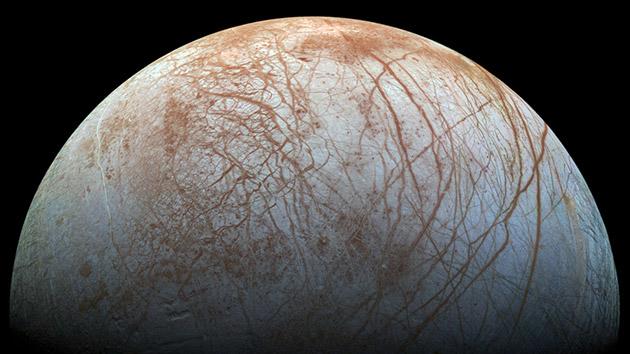
NASA wants to send an orbiter to Jupiter's moon Europa in a decade
NASA's scientists have been conjuring up mission concepts to Europa for more than a decade, but now they're absolutely sure that the Clipper concept is the one. So, they're asking $30 million from the government for a year of preliminary studies starting on October 1st, on top of the $100 million the Congress already gave the agency to construct a viable Europa mission last year. "We believe we have now found the one that is just right," JPL senior research scientist Robert Pappalardo told Discovery News, where he also discussed more details about the agency's Goldilocks Europa project. We say "Goldilocks," because Pappalardo describes earlier concepts as too big, too small or too plain expensive.









